On August 25, Hurricane Harvey tore through Port Aransas, Texas, bringing 130 mph winds and a 9′ tidal surge. I had been corresponding with Rick Pratt, the director of Port Aransas Museum and a boat builder at Farley Boat Works, an extension of the museum. He emailed me on September 1, a week after the Category 4 hurricane. Here’s Rick’s description of the damage:
The devastation of Port A is incredible; the fact that no one died is even more so. [One Port Aransas resident who had stayed to ride out the storm was found dead on September 3. That has been the only reported fatality in Port Aransas. —Ed.] This is a storm far worse than Celia or the 1919 storm, which were on record as our worst.
Our house came through with very little damage due to skilled building, good maintenance, and a careful selection of building site. We chose a spot high in the dunes and then built a low-profile house. It worked. Then add the major ingredient: luck. Neighbors all around us took a lot of damage. Much of my next-door neighbor’s house is now in my pond.
 Harry Martinez
Harry MartinezThe storage barn was the most badly damaged of the building. The photograph at the top of the page shows the wreckage behind the plywood wall in the middle of this image.
Farley Boat Works fared much worse. Our shop is coated with mud up to the 3′ mark where the storm surge came through and left indescribable mess behind. Everything is scrambled together. The motors on our big tools will need replacement. The row of boat storage barns we converted to a maritime exhibit hall was damaged but not destroyed. The row of barns immediately behind the shop is a tangled mess of boats, wires, tin roofing, rope, mud, and Lord knows what else. The antique Farley fishing boat stored there was badly damaged. The third row of barns lost a roof, battered by the parts of the building next door as it exploded and sailed away. The shop yard is covered in roofing tin, broken wood, and insulation.
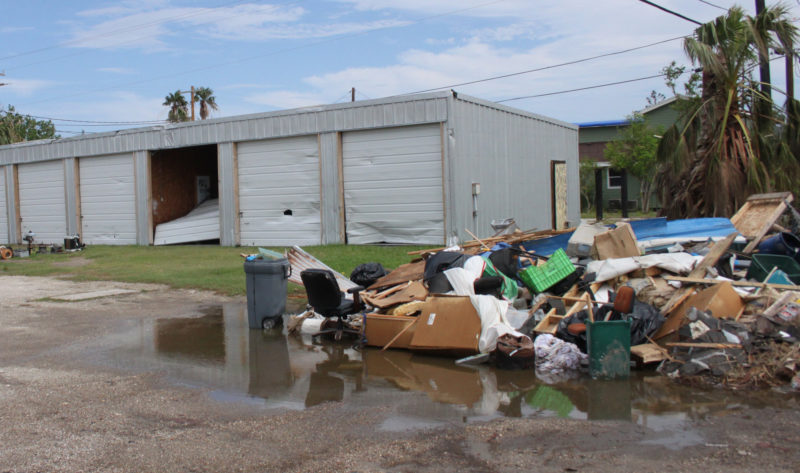 Harry Martinez
Harry MartinezThis storage barn was not so badly damaged, but the storm surge got to the contents of the building, now pilled along the street.
The town is a mix of piles of rubble, seaweed and wrecked buildings interspersed with damaged, but standing, houses and then collapsed houses. Many, many roofs are gone, framing and all. Mixed in are houses with no apparent damage at all.
Several of my friends lost houses, one in particular pulled up its foundation and floated off a few feet. Another traveled 50′ and stopped in the middle of the town’s drainage channel, leaning at a steep angle.
The liquor store peeled away from its foundation but left all the bottles standing in their racks. The local scavengers made short work of that and it likely kept them drunk and happy and saved our houses from looting for three days.
The marina took a big hit and lots of boats sank or rammed into other boats and took them down. One big one broke loose and raised havoc all across the harbor finally fetching up on the Coast Guard station bulkhead. The three folks inside it were unharmed. They now have one hell of a story to tell and a big case of PTSD.
The University of Texas is nearly destroyed. Both major buildings were damaged so badly they may have to be torn down, I am told. Then insult to injury, a big drill ship moored up the channel broke loose and destroyed the university’s research pier. The ship is now grounded against the jetty.
The beach is now far wider and lots of new sand was deposited there. It is littered with a nice collection of seashells but farther down toward the south end, it is covered with wreckage. The light house, all by itself a mile from town, was damaged heavily, but all the buildings are structurally intact and the tower lost only a lantern window. The dock raised itself up to the limit of its sunken pilings—10’—and is now as high as the porch on the first house.
And on and on and on.
We are now staying at a cousin’s house on North Padre Island, about 30 minutes from town, until power is restored in Port Aransas. We are told that might be as long as a month. The power lines are all down and tangled and many poles are snapped or uprooted. Water came back yesterday, and is most welcome.
A crew of faithful followers of Farley Boat Works and some family members are on their way down today to help us dig out and recover.
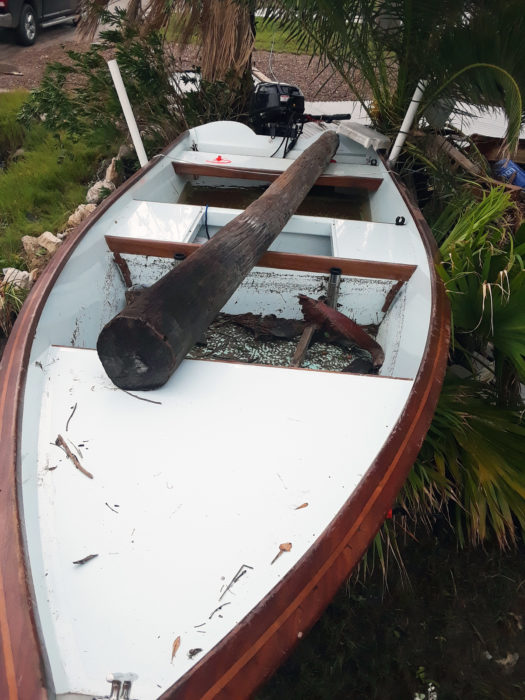 photographs courtesy of Rick Pratt
photographs courtesy of Rick PrattK BABY was stored in a boat barn that collapsed under the 130-mph winds. Still strapped to the trailer, she floated free of the wreckage on the 10′ storm tide, fetching up in someone’s walled garden several blocks away. They found her nestled in the mud and wreckage five days later with a broken telephone pole laying lengthwise inside. With a lot of effort, Ken Curlee and crew freed the boat, removed the pole, and towed her home. She had only a few scratches.
I checked in with Rick again on September 23 and received this reply:
Things are still pretty tough here at the moment. There is some improvement, but many have lost everything and are just now realizing it. The insurance folks are coming up with amounts way below what actual repair costs are. Many of the volunteers are now gone or leaving. We are coming up on crunch time.
The annual Port Aransas Wooden Boat Festival is held in October, which would be quite soon after such a devastating event, but Rick writes, “We are going to do the show just to show the world we can.” The festival, subtitled “The Harvey Edition,” will keep to its scheduled weekend, October 20 through 22, along with the Old Town Festival and a surfing contest. I hope those of you who regularly attend will show up and be joined by anyone interested in wooden boats and willing to support Farley Boat Works and the community of Port Aransas. There are hotels in nearby Corpus Cristi and camping spaces in Port Aransas.
UPDATE: October 3. The organizers of the Port Aransas Wooden Boat Festival held a meeting today and decided it was best to postpone the festival. It will be rescheduled for the Spring of 2018 on a date to be announced.
For those unable to attend, the festival’s web site has a link for (tax deductible) contributions to support the restoration of Farley Boat Works.
![]()

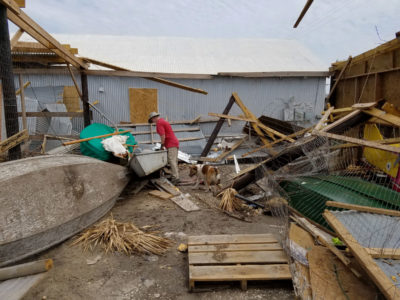
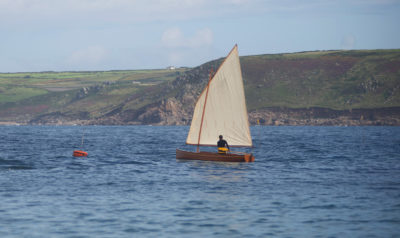
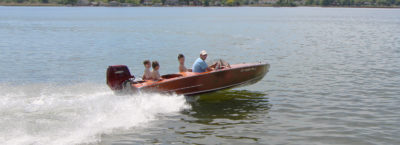
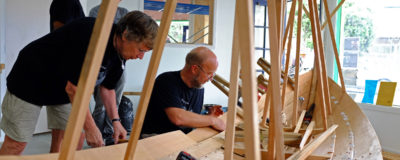
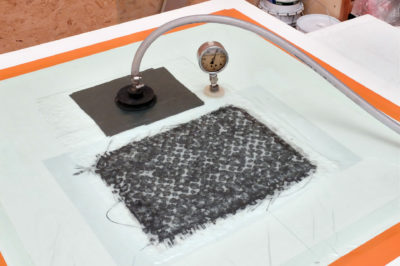
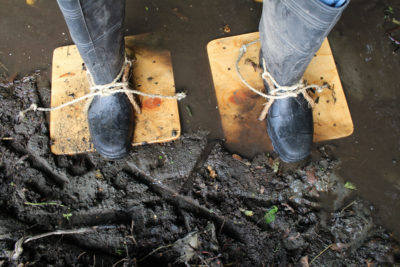
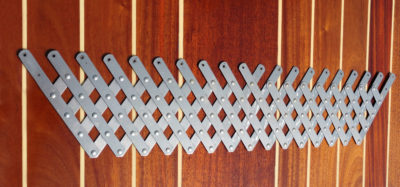
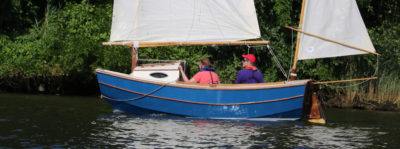
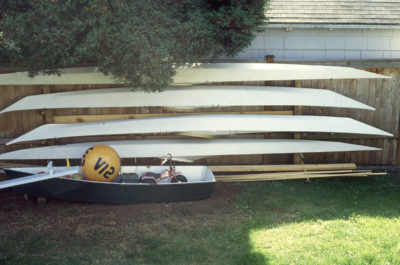
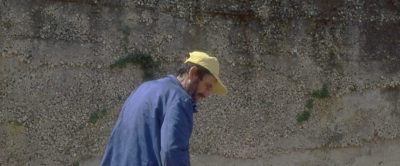
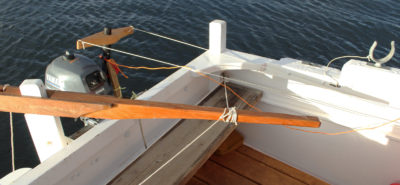

Thank you Rick and Chris for this sad report and a glimmer of hope that Farley Boat Works and The PlyWooden Boat Festival will arise from the mud and mosquitoes.
A plea, especially to all Texas “messers”: Click on the link mentioned above and send a donation to Farley Boat Works. They and Duckworks are the best things that have happened for small boat building in our state. Help keep it alive!